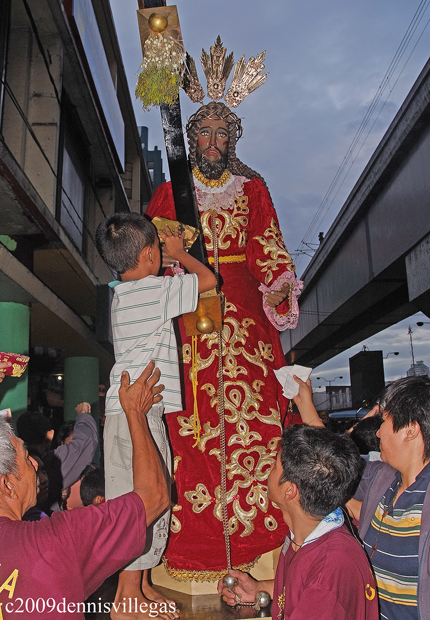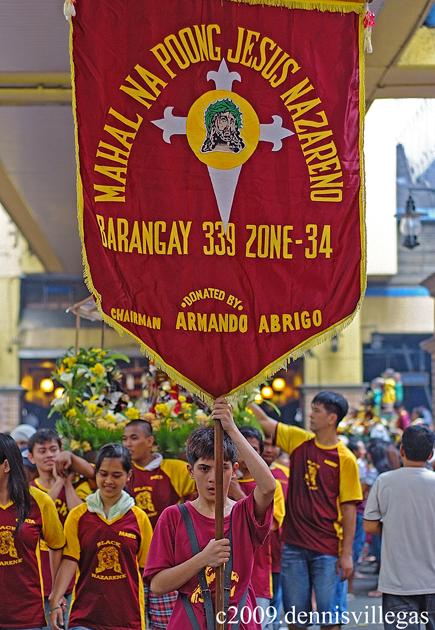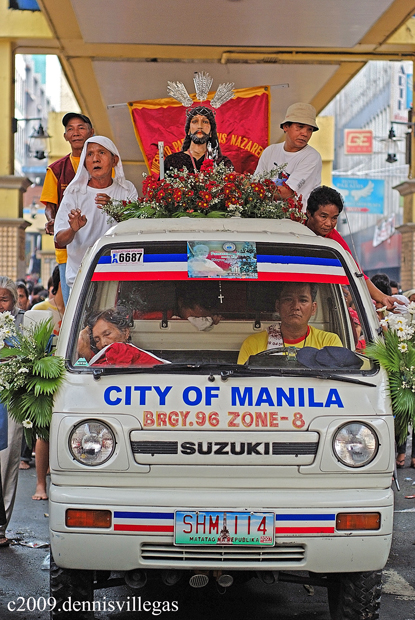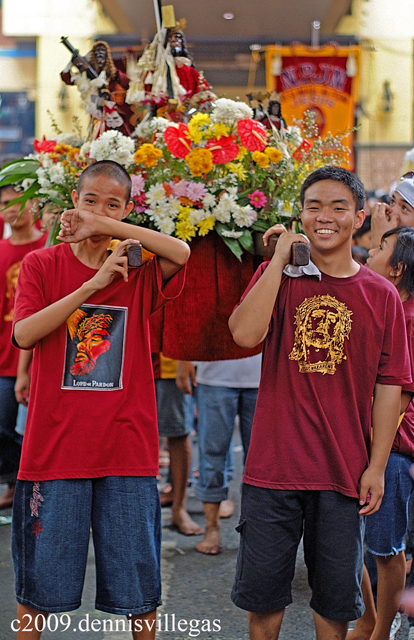For many of Filipinos, the image of the suffering Christ has a deep religious affinity, for we can empathize with the sacrifice endured by the Lord on the road to the Calvary. As a people with a long history of political oppression, the Filipinos know what suffering means. Thus for many devotees, the Black Nazarene of Quiapo became not just an icon of religious devotion, but also a symbol of the long suffering the Filipinos had endured for the past centuries.
Many Nazarene devotees own replica statues of the Senyor Nazareno for a permanent place in their homes. I have seen some replicas dating more than 100 years old, in different sizes, and in different versions and attires. Yet the replicas are all identical in depicting the bleeding, suffering Black Christ*.
Every Feast Day of the Black Nazarene of Quiapo, many Nazarene devotees with a replica of the Senyor Nazareno participate in the procession known as "The Parade of the Replicas". The devotees parade their replicas, either hand-carried or mounted on a garlanded float.
Many Nazarene devotees own replica statues of the Senyor Nazareno for a permanent place in their homes. I have seen some replicas dating more than 100 years old, in different sizes, and in different versions and attires. Yet the replicas are all identical in depicting the bleeding, suffering Black Christ*.
Every Feast Day of the Black Nazarene of Quiapo, many Nazarene devotees with a replica of the Senyor Nazareno participate in the procession known as "The Parade of the Replicas". The devotees parade their replicas, either hand-carried or mounted on a garlanded float.







*The Black Nazarene of Quiapo originated from Mexico, and was brought to Manila by Augustinian Recollect friars on 1606. It was not originally black, however. The galleon that took it to the Philippine Islands caught fire, charring the image, and blackening its complexion. The Senyor Nazareno also survived later fires in Quiapo Church.







No comments:
Post a Comment